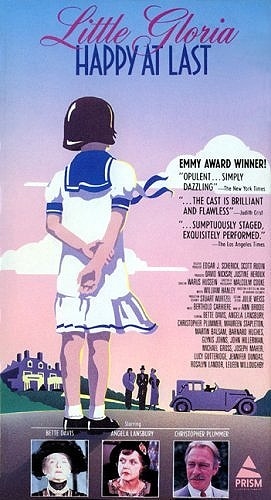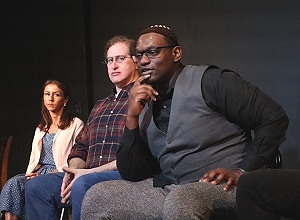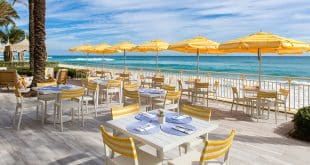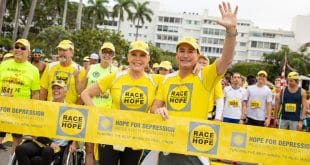Bob Carter is the founder and artistic director of Bob Carter’s Actor’s Workshop and Repertory Theatre (Actor’s Rep) in West Palm Beach. In addition to being a student of Lee and Paula Strasberg, he was the first to bring Off-Broadway plays to South Florida.
Tell us about your beginnings. I understand you studied with Lee Strasberg. What was that like and who were your peers?
My family came to Palm Beach County in 1924. Pretty normal childhood. I went to Northboro Elementary and Junior High, and Palm Beach High School. I worked at the new Royal Poinciana Playhouse in Palm Beach, but I couldn’t get out early enough from PBHS, so I transferred to Webster Tufts, a small private school in Lake Worth, in my Senior year so I could make it to the theater for call-time at their Wednesday matinees.
Like many folks in the theater, I did my first play in the first grade. I did at least one play every year until I got to high school, but doing only one show a year was no longer enough for me. Even though I did the annual school musical at PBHS (Brigadoon, with George Hamilton in the lead), it was not enough theater for me. So, I did local TV shows, plays at the Norton Gallery, worked at Music-Carnival and then, in my Junior year, the new Royal Poinciana Playhouse opened in Palm Beach, and I was offered roles on-stage, but I wound up being their sound technician. Upon graduating from high school, I moved to New York City to study my craft. I had been advised to audition for Sandford Meisner at The Neighborhood Playhouse in Greenwich Village. I was familiar with both Meisner’s work and the Playhouse, and I also knew and admired the members of his famous Group Theater. Regardless, before I auditioned for Sandy, I decided I would rather start with Lee and Paula Strasberg. I interviewed with Lee and was selected to study and train with him and Paula in their private classes. I was very fortunate indeed. It was not uncommon to sit with other students such as Marilyn Monroe, Jane Fonda and so many other fine young actors in training with such a great teacher.

I have been very fortunate to work with Helen Hayes, Vincent Price, Michael Epps, Richard Rogers, Jule Stein, Burt Reynolds, Zsa Zsa, Ava Gabor, Eartha Kitt, Christopher Hewitt, Barbara Harris and so many artists I admire for their body of work. It was exciting to do a Broadway show with Sada Thompson. However, my favorite moments as an actor were when I was hired as Christopher Plummer’s stand-in during the filming of Little Gloria, Happy at Last. It was the life story of Gloria Vanderbilt. Chris had a scene with Bette Davis which took several days to shoot because the owner of the home would only allow one camera due to all of the precious antiques in each room. Every time we got a break or had to do a breakdown to move the lights and cameras, Chris would go straight to his trailer, leaving Miss Davis and myself on the set alone together. She never left the set except for meal breaks. I spent close to a week talking with and getting to know one of the most important talents of the 20th century. This is my favorite memory of them all. Bette Davis literally changed my life.
What attracted you to directing? I understand you were the first to bring Off-Broadway to south Florida.
I directed my first play here in South Florida. I had done quite a bit of reading about directing and I had observed the choices directors made of the plays I saw in New York. Working with directors is a large part of being a well-trained actor. In 1977, I was asked to direct a production and accepted the offer. I truly enjoyed every moment of the work. It got very strong reviews and I was off and running on a completely new aspect of my work in the theater.
After training and working in New York (along with some regional work), I moved back to West Palm Beach because a family member was terminal and his transition was very slow and painful. Soon after arriving home, I got involved with local theater and started doing shows and plays. In New York, I had not only trained with Lee and Paula Strasberg, but I also audited classes with Stella Adler, Sanford Meisner, Robert Lewis and Uta Hagen. It was what a group of us enjoyed doing on those days when we did not have a class with Lee or Paula.
One day, several actors and I were talking at a South Florida casting and we discussed how there were no classes in South Florida that taught the Stanislavski System. We agreed that we needed to continue studying our craft and should start meeting to share the training we had up to that point in our work and create a space where we could meet and work together. I was asked if I would conduct the training and immediately said “No” as I had never thought of teaching theater/acting. I agreed to facilitate the meetings but not to teach. However, it soon turned out I was teaching the group and became really involved in doing so.
It’s interesting to note that, in the late 1970s, profane language (four-letter words) and some subject matter had never been done on stage in Florida – at all, anywhere. I believed actors in South Florida were being deprived as we could not do any of the work that was currently being done On and Off-Broadway in Manhattan – not to mention Off-Off-Broadway. These were playwrights who would become the writers of our generation, who wrote about things and situations that we experienced every day in our lives. So, we made a decision to push the envelope. Most of the material we chose to work on in our workshop were scenes and monologues from these writers.
Actors must deal with many personal things in our work. I, myself, do not have a pattern of speech and vocabulary which includes four-letter words. I don’t judge those who do, but many characters were being written during this time with language uncomfortable to most of the local actors. Local talent had never been challenged with characters who used such language or acted in plays with subject matter which was assumed to be objectionable to an audience.

Our history dates back to our founding in 1980 as Actors Workshop & Repertory Co. A gentleman came to West Palm Beach with the intention of starting a Gay theater. He was asking around the theater community about talent and actors who would not be intimidated with Gay subject matter. He was told about our workshop and what appeared to be a fearless group of actors.
He was told all we did was study, but never performed. That was not the case. We performed all over South Florida, just not as Actor’s Workshop. When he approached me with his idea of launching a Gay theater, I advised him that the Gay community would not attend his theater as they would never gather in public under any business with a banner of “Gay.” After all, this was 1980. I suggested he reconsider opening a theater which would do any play, as long as it was a valid piece of work regardless of its subject matter or language.
Several days later, he called me and said he’d been asking around and it seemed I’d been right about those who might support the theater.
In the spring of 1980, we opened at 408 South Dixie, in downtown West Palm Beach in our own 99 seat theater. We did new plays and classic plays. When we did do a Gay play, the Gay community stayed away. However, our audience, mostly retirees from Century Village, loved it and literally stopped the show with laughter. The cast had to constantly “hold” on stage until the laughter died down before they could continue the play. We attracted a dedicated audience of patrons who did not attend the commercial plays on Broadway, but. instead, headed downtown where some of the strongest theater in New York is created.
Unfortunately, the theater didn’t last and we were forced to stage our plays at various venues. We worked at the Kravis Center in West Palm Beach, the Stonzek Theater in Lake Worth and Mo’s Art Theater in Lake Park before we found a temporary home in the Cuillo Center (after the Burt Reynolds Theater went bankrupt). Then, the Cuillo went bankrupt.
In 2011, we found a small, 54 seat theater at 1009 North Dixie in West Palm Beach. We eventually outgrew the space and spent two years scouting for a new location. It turned out that the place we wanted was right across the street at 1000 North Dixie. In January 2019 we relocated. Our new theater has a larger stage (68 seats), more classrooms, larger office space, five bathrooms and a lobby. We couldn’t be happier.
What are some of your favorite past performances at Actor’s Rep?
Some of my favorite plays have been The Taffetas, columbinus, Hands Up!, Loquacious & Bodacious, The Life and Times of Zora Neale Hurston, and The Exonerated.

We are now offering 400% more classes than we were able to offer in our previous theater. Our education director Kat Kenny has done a fabulous job. We provide multiple classes on Improvisation, Speech & Diction, Acting 101, Acting 201, Audition from A to Z, Acting for TV & Film, Preparation classes for BAK and Dreyfoos in Theater, Communication and Visual Arts, Digital Sketch Comedy Writing, and the Alexander Technique. We also have a Community Outreach Program where we teach theater in an after-school program and one of our instructors conducts a class for students with special needs.
Besides the fact they are larger venues, what sets Actor’s Rep apart from other West Palm Beach venues such as Dramaworks and the Kravis Center for the Performing Arts?
Our motto is The Most Socially Relevant Theater in Palm Beach County! That says it all and I believe is what sets us apart from all other venues.
What does the future hold for Actor’s Rep?
I see us as a place where an actor of any age or director can learn and grow as an artist and have a stage to present material which challenges each one of them, along with an appreciative audience. Our present capacity is 68 seats, but we are drawing up plans to increase our capacity to 120 seats.
What is your opinion about the current state of theater in South Florida?
My close friend, Kelly Roosevelt, and I travel often to theaters all over the South Florida area. We have seen some very powerful theater in places like Gablestage in Coral Gables, at the beautiful Biltmore hotel, and many other theaters. I think theater is growing and more and more folks are discovering the fact that we have a very rich theater community in South Florida. If anyone still sees us as a Cultural Oasis, it is because they have not taken the time to take advantage of all we have.
What do you love most about West Palm Beach?
I continue to find so many different things to respect and admire about my home state and county, but to think we will stop or halt our growth is a lesson in frustration. Money always wins. Fortunately, we have been able to save much of our past through preservation. Not just some of our buildings, like the homes of our African American residents of the past in the Northwest section of the city, but also homes in Palm Beach, our 1916 Courthouse, and homes up and down the coastal area. We are also restoring our landscapes to their original native plants and trees with such a beautiful and natural look. Since you asked me what I like “most,” I would have to answer; the people. We are such a rich mix of folks. We come all over the world, and West Palm Beach is a neighborhood for all of them. We have neighborhoods where we all mix and live together as one. I think the downtown area has become a truly international community. How many other cities can claim that to be true? We are blessed, indeed.
For more information about Actor’s Rep including their upcoming show schedule, please visit www.ActorsRep.org
WestPalmBeach.com
The Official Guide to West Palm Beach, Florida!






